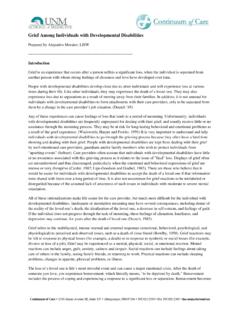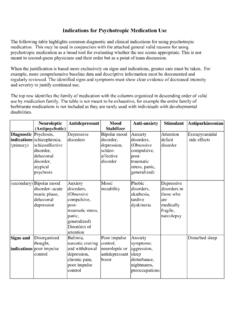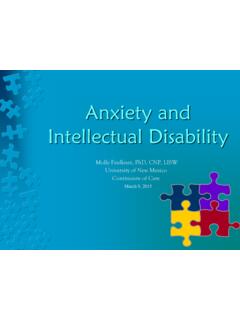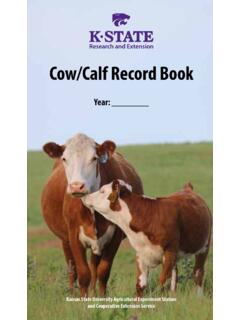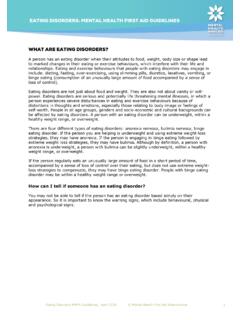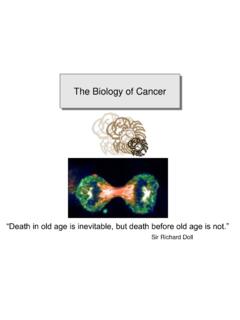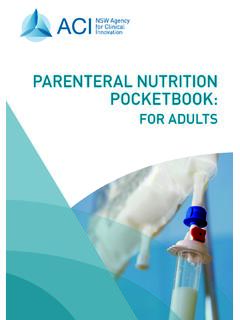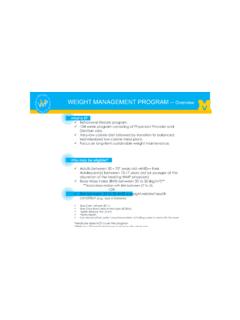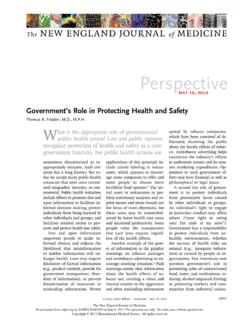Transcription of Enteral Nutrition Overview - University of New Mexico
1 Enteral Nutrition Overview Christine Trapp PhD RD LD Dietitian Consultant Global Nutrition Services LLC American Society for Parenteral and Enteral Nutrition ( )(2006). Retrieved December 9, 2010 from Indications for use Functional GI, but clinical conditions in which oral intake is Impossible Inadequate Unsafe Nutrition ASSESSMENT FUNCTIONAL GI TRACT? YES NO Enteral Nutrition ? PARENTERAL Nutrition Enteral Nutrition Long-term Gastrostomy Jejunostomy Short-term Nasogastric Nasoduodenal Nasojejunal GI Function Normal Compromised Intact Nutrients Defined Formula NUTRIENT TOLERANCE Adequate Progress to Oral Feedings Inadequate PN Supplementation Adequate Progress to More Complex Diet and Oral Feedings as Tolerated Progress to Total Enteral Feedings Intact Nutrients Defined Formula Important factors to consider Clinical status Diagnosis Prognosis Risks and benefits of therapy Discharge plans Quality of life Ethical issues Patient s and the family s wishes Contraindications to EN support Non-operative mechanical GI obstruction Intractable vomiting/diarrhea refractory to medical management Severe short-bowel syndrome Paralytic ileus Distal high-output fistulas Severe
2 GI bleed Severe GI malabsorption Inability to gain access to GI tract Need is expected for < 5-7 days for malnourished patients or 7-9 days if adequately nourished aggressive intervention not warranted or not desired Paralytic ileus Now known that the absence of bowel sounds does not necessarily preclude safe EN Vomiting an diarrhea Simultaneous gastric decompression Use of prokinetic agents Minimally functional digestive and absorptive capabilities Elemental formula Small peptide formula RISKS AND BENEFITS First-pass metabolism (liver) Stimulates release of CCK Fiber, intact protein, peptides, specialized fatty acids Maintain normal intestinal pH and flora Fuel source for the bowel Reduces infectious complications Less costly than PN Risks Early EN may promote high gastric residuals risk of aspiration pneumonia Bacterial colonization of the stomach Benefits significantly outweigh the Risks HOW TO DECIDE WHAT FORMULA TO FEED Patient variables Nutritional status and requirements Electrolyte balance Digestive and absorptive capacity Disease state Renal function Medical or drug therapy Routes available for administration Enteral Formulations General Characteristics Digestibility/availability of nutrients Nutritional adequacy Viscosity Osmolality Ease of use Cost Carbohydrate Fat Protein 40-90% of calories Primarily corn syrup solids Corn oil Soybean oil Casein Soy
3 Protein isolates Most formulas do NOT contain lactose Standard/Polymeric Formulations kcal/ml PRO CHO FAT PRO source n6:n3 fiber (g/L) osmlality Nutren 1 16% 51% 33% caseinate :1 (14) 315 Nutren Replete 1 25% 45% 30% caseinate :1 (14) 300 Promote 1 25% 52% 23% caseinate & soy protein isolate :1 ( ) 340 Jevity 1 Cal 17% 54% 29% caseinate & soy protein isolate :1 300 Osmolite 1 Cal 17% 54% 29% caseinate & soy protein isolate 5:01 0 300 Fibersource HN 18% 53% 29% soy protein isolate & soy protein concentrate :1 10 490 Jevity Cal 19% 53% 29% caseinate & soy protein isolate :1 18 450 Isosource HN 18% 53% 29% soy protein isolate :1 0 490 Osmolite Cal 19% 53% 29% caseinate & soy protein isolate 5:01 0 360 Isosource Cal 18% 44% 38% caseinates :1 8 650 Jevity Cal 17% 54% 29% caseinate & soy protein isolate :1 22 525 Osmolite Cal 17% 54% 29% caseinate & soy protein isolate NA 0 525 Nutren 2 16% 39% 45% caseinate :1 0 746 TwoCal HN 2 17% 43% 40% caseinates NA 5 725 Standard Polymeric Formulas Blenderized formula kcal/ml PRO CHO FAT PRO source n6:n3 fiber osmolality Compleat 18% 48% 34% milk, chicken :1 6 g/L 340 Compleat Pediatric 1 15% 50% 35% chicken, milk, pea puree.
4 1 6 380 Homemade Tube Feedings Liquefied in blender and bolus fed through a GT Safe and effective use has not been reported in peer-reviewed publications Reasons given for use Lower cost Perceived health benefit from variety Psychosocial considerations Recommend diet be analyzed for nutritional adequacy Contraindications Acute illness or immunosuppression GT size < 10 Fr in place (>14 Fr preferred) Fluid restrictions or intakes less than 30 oz/d Continuous drip feedings requiring a tube feeding unrefrigerated for more than 2h Jejunostomy tubes requiring continuous feeds Multiple food allergies/intolerances or special diet restrictions Lack of resources (electricity, refrigeration, hot water, etc.) Diabetic formulas High in PRO Low in CHO High in FAT Caloric density varies from formulas Glucerna Glucerna Select Glucerna Glucerna Nutren Glytrol Diabetasource AC + arginine Nepro High protein designed for pt s receiving dialysis Suplena Low protein Novasource Renal High protein, +arginine RenalCal Low protein, +arginine Renal formulas Low in phosphorus, potassium, calcium and sodium High kcal ( kcal/ml) Low CHO, high Fat Pulmonary formulas Low CHO ?
5 Decrease pCO2 High Fat High kcal ( kcal/ml) Nutren Pulmonary Pulmocare Immune enhancing formulas Caloric density ranges from kcal/ml CHO ranges from moderate to very low Typically additional arginine to support proliferation and function of immune cells Some contain glutamine for GI-tract integrity and energy for immune cells Typically, additional EPA/DHA to help modulate inflammation and support immune function Impact 22% PRO, 53% CHO, 25% FAT g arginine g EPA/DHA Impact Glutamine 24% PRO, 46% CHO, 40% FAT 15 g glutamine g arginine Impact 22% PRO, 38% CHO, 40% FAT g arginine g EPA/DHA Oxepa 17% PRO, 28% CHO, 55% FAT g EPA Pivot 25% PRO, 45% CHO, 30% FAT 13 g arginine g glutamine g EPA g DHA Carbohydrate Fat Protein Hydrolyzed cornstarch Malodextrin Fatty acid esters MCT Structured lipids Fish oil Hydrolyzed Casein Hydrolyzed Whey protein Crystalline L-amino acids Hydrolyzed Lactalbumin Soy protein isolate Elemental and Semi-elemental Formulations Semi-elemental formulas Optimental 67% whey protein hydrolysate, 28% partially hydrolyzed sodium caseinate, and 5% added arginine (21% PRO, 54% CHO, 25% FAT) Peptamen and Peptamen with Prebio enzymatically hydrolyzed whey protein (16% PRO, 51% CHO, 33% FAT) Peptamen enzymatically hydrolyzed whey protein (18% PRO, 49% CHO, 33% FAT)
6 Semi-elemental immune-enhancing formulas Crucial enzymatically hydrolyzed casein, L-arginine Supplemental arginine and omega-3 fatty acids to help support immune function (25% PRO, 36% CHO, 39% FAT) Peptamen AF enzymatically hydrolyzed whey protein Omega-3 fatty acids to help modulate the inflammatory response (25% PRO, 36% CHO, 39% FAT) Perative Partially Hydrolyzed Sodium Caseinate, Whey Protein Hydrolysate Added arginine (21% PRO, 55% CHO, 25% FAT) Elemental formulas Tolerex 100% free amino acids Additional glutamine and arginine ( PRO, CHO, FAT) Vital HN Peptides and free amino acids ( PRO. CHO, FAT) Vivonex 100% free amino acids Additional glutamine and arginine Vivonex Plus (18% PRO, 76% CHO, 6% FAT) Vivonex RTF (20% PRO, 70% CHO, 10% FAT) Vivonex TEN (15% PRO, 82% CHO, 3% FAT) Order Sets Enteral formula Route of delivery Advancement schedule Goal for formula delivery Monitoring parameters Routine aspects of care Flushing protocols Patency Hydration Aspiration precautions Assessment of tolerance Figure 2.
7 Orders for Enteral feeding in adults. Brantley S L Nutr Clin Pract 2009;24:335-343 Copyright by The American Society for Parenteral and Enteral Nutrition Factors Affecting Patency Characteristics of the formula Concentrated (thick) High protein Fiber-enriched The feeding tube Medication administration Flush tube at regular intervals with water Before and after medications with water Acidic irrigants (cranberry juice) tend to promote clogging! Infection control Adherence to basic principles of infection control Hand washing Cleansing tops of cans before opening Wearing gloves during transfer of formula from cans to administration sets Observing cutoffs for hang times for open delivery systems Sterile open system (institution) 8h Sterile open system (home) 12h Sterile closed system (per manufacturer s guidelines 24-48h) No topping-of existing feeding solutions Avoid manipulation of prefilled closed system containers Medication Administration Orally is preferred NEVER mix with Enteral formula Flush before and after Other characteristics of medications (such as sorbitol content and osmolality) can contribute to diarrhea.
8 Oral Hygiene Patients/clients with no oral intake are vulnerable to dental problems. Poor oral hygiene and dental disease increase risk of aspiration pneumonia Appropriate oral hygiene Brushing 2x/day Rinsing with mouthwash Lip balm to protect lips Monitoring Physical Assessment Clinical signs of fluid and nutrient excess or deficiency. Vital signs Actual fluid and nutrient intake Measurement of output Weight trend Laboratory data (initially, and at least every 3-6 mo) CBC, glucose, BUN, creatinine, electrolytes, Ca, Mg, P, liver fxn tests, TG serum proteins, PT/INR, urine, CRP Markers for nutritional adequacy Albumin, prealbumin trend, nitrogen balance studies Review of medications Changes is GI function Transitional Feeding Hold Enteral feedings for an hour or so before scheduled meals to stimulate appetite Nocturnal infusion only When oral intake reaches > 50% of estimated needs x 2-3 days.
9 Feeding can decreased COMPLICATIONS Nausea and Vomiting Delayed gastric emptying Hypotension Sepsis Stress Opiate medications Anticholinergics Excessively rapid infusion of formula Infusion of very cold solution Infusion of a high fat solution Obstipation C-diff Reduce or discontinue all narcotic medications Switch to a lowfat and/or isotonic formula Administer the feeding solution at room temperature Reduce the rate of infusion by 20-25 ml/h Provide small boluses (50-100 ml/feeding) Prokinetic agents Abdominal distension GI ileus Obstruction Obstipation Ascites Diarrheal illness Maldigestion & Absorption Clinical manifestations Unexplained weight loss Steatorrhea Diarrhea Anemia Tetany Bone pain Pathological fractures Bleeding Dermatitis Neuropathy Glossitis Edema Diagnostic studies Screening (gross & microscopic examination of the stool, radiological examination of intestinal transit time, serum carotene concentration) Maldigestion/malabsorption of specific nutrients Lactose tolerance test Schilling test (B12) other Endoscopic small bowel biopsy Celiac diseas Tropical sprue Whipple s disease Diarrhea Common causes Medications (sorbitol-based, antibiotics) Infection (C-difficile, nonclostridial bacteria)
10 Formula intolerance (osmolarity, fat content) Specific component of the formula (lactose) 1. Provide adequate fluids to maintain hydration & electrolyte balance fluid & electrolyte losses a. Provide soluble fiber b. Change to continuous duodenal infusion c. Reduce rate of infusion 3. Determine etiology Enteric pathogen or inflammation or disease process? YES NO Algorithm for the Treatment of Diarrhea Treat accordingly Enteric Pathogen C. difficile Salmonella Shigella Campylobacter Yersinia E. coli Disease/Inflammation Malabsorption syndromes Diabetes Pancreatic insufficiency Bile salt malabsorption Fecal impaction Diarrhea continues Pharmocological If possible, change offending medication Antibiotics Sorbitol containing medications H2 blockers Lactulose/laxatives Magnesium-containing antacids Potassium and phosphorus supplements Antineoplastics quinidine Diarrhea continues Antimotility medication Loperamide HCl or diphenoxylate HCl, atropine sulfate Codeine Paregoric Deodorized tincture of opium Treatment worked Treatment didn t work Gradually increase TF rate to goal Change to peptide-based or elemental formula Treatment worked Treatment didn t work Increase rate as tolerated to goal D/C TF Provide PN until diarrhea resolved D5 NS via feeding tube Constipation Dehydration Inadequat
